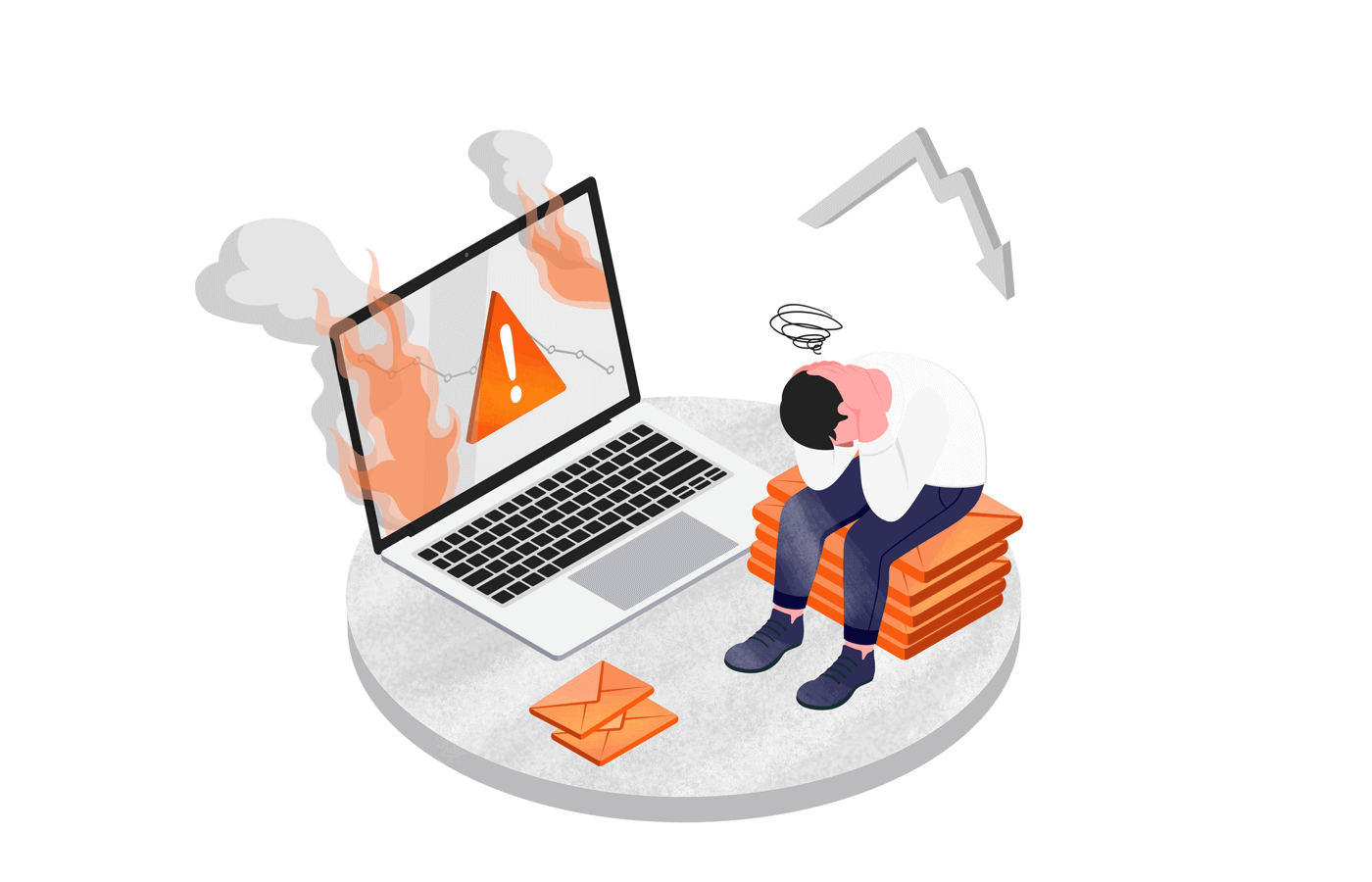Despite our best efforts, email campaigns don’t always perform as expected. Sometimes we struggle to keep our audience engaged. Worse still, our messages may end up in the spam folder, never reaching the inbox.
Email marketing has many moving parts. It’s no surprise we run into recurring challenges. Let’s explore five of the most common issues—and how to fix them.
Problem #1: My Emails Are Going to the Spam Folder
You invest time perfecting your campaign, only to see it land in the junk folder. This happens more than we’d like, as platforms like Gmail and Outlook are constantly tightening spam filters.
Solution 1: Verify Your Domain
Avoid sending campaigns from free addresses like Gmail or Yahoo. These lack authentication and are more likely to be flagged as spam.
Purchase a domain and set up email using that domain. Then, verify the domain in your email platform—usually by updating your DNS records. This step builds trust with ISPs.
Solution 2: Use Double Opt-In or Send a Welcome Email
Double opt-in ensures that new subscribers confirm their intent to join your list. When they look for and engage with your confirmation email, it sends a strong positive signal to email providers.
Alternatively, send a welcome email immediately after sign-up, and use it to request they add you to their safe sender list. This improves future deliverability.
Problem #2: My Open Rates Are Declining
Low open rates often signal disengagement. But you can turn things around.
Solution 1: Segment Your List
Generic, one-size-fits-all emails fail to engage. Group your subscribers based on demographics or preferences. For example, a food blogger can segment by dietary needs—vegan, keto, gluten-free.
Tailored content = higher opens.
Solution 2: Clean Your Mailing List
Inactive subscribers hurt your metrics. If someone hasn’t opened an email in 3–6 months, start with a re-engagement campaign. If there’s no response, remove them. Focus on quality over quantity—an engaged list drives better results.
Problem #3: No One’s Clicking My Email Links
If your open rate is fine but clicks are lacking, it’s time to refine your content and calls to action (CTAs).
Solution 1: Personalise Your Emails
Personalisation can be as simple as including a name or as advanced as tailoring content based on behavior.
Use surveys to gather preferences and segment accordingly. For example, send meat-based recipes to non-vegans, and vegan content to plant-based followers.
Solution 2: Optimise Your CTAs
Keep CTA text short and clear—especially for mobile users. Use tried-and-true language like “Read more” or “Buy now.”
Limit CTAs to one or two per email to avoid overwhelming the reader. One focused CTA typically outperforms multiple scattered ones.
Problem #4: My Mailing List Isn’t Growing Fast Enough
Your email list is a key asset—but growing it takes strategy.
Solution 1: Use Psychology in Your Sign-Up Forms
Tap into principles like:
- Reciprocity: Offer a freebie or discount
- Social Proof: Mention subscriber count
- Exclusivity: Frame it as joining a VIP group
Try different opt-in types—pop-ups, embedded forms, or timed prompts—and test what converts best.
Solution 2: Promote on Other Channels
Don’t rely solely on your website. Promote your newsletter in Instagram bios, Facebook CTAs, and Twitter profiles.
Run paid ads or repurpose newsletter content to tease value and drive subscriptions.
Problem #5: I Don’t Know What Happens Post-Click
Open and click rates don’t tell the full story. If you don’t know what subscribers do after clicking, you’re missing critical insights.
Solution 1: Use Google Analytics
Google Analytics lets you track post-click engagement. Check bounce rates, pages per session, and average session duration to evaluate performance.
Navigate to Acquisition > All Traffic > Channels to compare email traffic against other sources.
Solution 2: Use UTM Codes
Attach UTM parameters to your email links to track specific campaigns. Use Google’s Campaign URL Builder to create these links.
Once UTM codes are in place, monitor performance by campaign and even attribute revenue or lead generation back to individual emails.
Final Thoughts
Fixing email marketing problems takes time. There are no overnight fixes. But with consistent effort—cleaning your list, segmenting smartly, and tracking the right metrics—you can transform underperforming campaigns into powerful growth tools.




